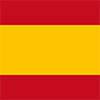The first new images in 25 years of the aircraft carrier USS Yorktown, sunk in 1942
The Battle of Midway, June 4-7, 1942, was one of the most decisive battles of World War II.
A few months earlier, the United States had suffered a severe blow with the Japanese attack on Pearl Harbor. Thanks to the information captured by US naval intelligence, it was known in advance that the Imperial Japanese Navy intended to deal a new blow to the US on Midway Island, in order to force Roosevelt to sign an armistice that would allow Japan to consolidate its conquests in the Pacific Ocean. Admiral Chester W. Nimitz, commander of the US Pacific Fleet, ordered an ambush to be prepared.

One of the US Navy aircraft carriers sent to carry out that ambush was the USS Yorktown (CV-5), launched on April 4, 1936 and which had been seriously damaged in the Battle of the Coral Sea at the beginning of May 1942. The ship was able to return to Pearl Harbor for repairs. On May 29, orders were given to accelerate the repairs of the ship to use it for the Midway ambush. The tasks that were to take three months had to be carried out in 24 hours by 1,400 workers. Finally, USS Yorktown was able to join the battle group formed by the aircraft carriers USS Enterprise (CV-6) and USS Hornet (CV-8). On June 4, Douglas SBD Dauntless dive bombers of the USS Yorktown managed to destroy the Japanese aircraft carrier Soryu. The battle ended with a decisive American victory, managing to sink four Japanese aircraft carriers.

However, before that resounding Japanese defeat, aircraft from the aircraft carrier Hiryu attacked the USS Yorktown, scoring three hits. The ship remained afloat, but listed to port and with the rudder stuck. Finally, on June 6, when the destroyer USS Hammann (DD-412) was towing the aircraft carrier, the Japanese submarine I-168 managed to hit the two American ships with three torpedoes. One of them cut the destroyer in half and the other two hit the USS Yorktown, which sank on June 7, 1942. The aircraft carrier sank to a depth of 5,168 meters, without being damaged. knew nothing about him for 56 years.

Finally, on May 19, 1998, the wreck of the USS Yorktown was located by a joint expedition of the US Navy and the National Geographic Society headed by Robert Ballard, famous for discovering the wreck of the Titanic . A few days ago, the Ala ʻAumoana Kai Uli expedition, aboard the ship E/V Nautilus was able to locate the wreck of the USS Yorktown again and take the first images of this aircraft carrier in 25 years. This Monday a video was published showing those images:
You can see here some of the images from the video, which reveal that the aircraft carrier is in relatively good condition despite having been sunk at a great depth for 81 years. Here we see the command bridge, very well preserved.

The CXAM radar antenna, installed on the ship in 1940. The CXAM was the first radar system installed on US Navy ships. The good condition it is in is surprising.

Two of the eight 152 mm guns that the ship had on board for protection. Like other World War II aircraft carriers, the USS Yorktown was very well armed. In addition to the aforementioned guns, at the time of her sinking she carried 8 28 mm anti-aircraft guns, 24 20 mm Oerlikon anti-aircraft guns and 24 12.7 mm heavy machine guns.

An image of the aircraft carrier island. On the left we see the flight primary, from where the activity on the ship's flight deck was controlled.

The aircraft hangar of the aircraft carrier, specifically the opening located on the port side, near the stern.

|
Don't miss the news and content that interest you. Receive the free daily newsletter in your email: Click here to subscribe |
- Lo más leído
- Sabbione: a beautiful Swiss town that looks like something out of 'The Lord of the Rings'
- The 'Bomber Glacier': The wreckage of a B-29 on a remote mountain of Alaska
- An old Soviet military plane abandoned from 1971 on a Russian island near Alaska
- The supermassive black hole of Phoenix A, the biggest known light-devouring monster
- The Iwo Jima Japanese military tunnels and why there are so many bottles there
- The story of the 'Chewing Gum Girl' and her small grave in a cemetery in Chester, England
- Canada's matryoshka island: an island in a lake on an island in a lake on an island

 ES
ES





Opina sobre esta entrada: